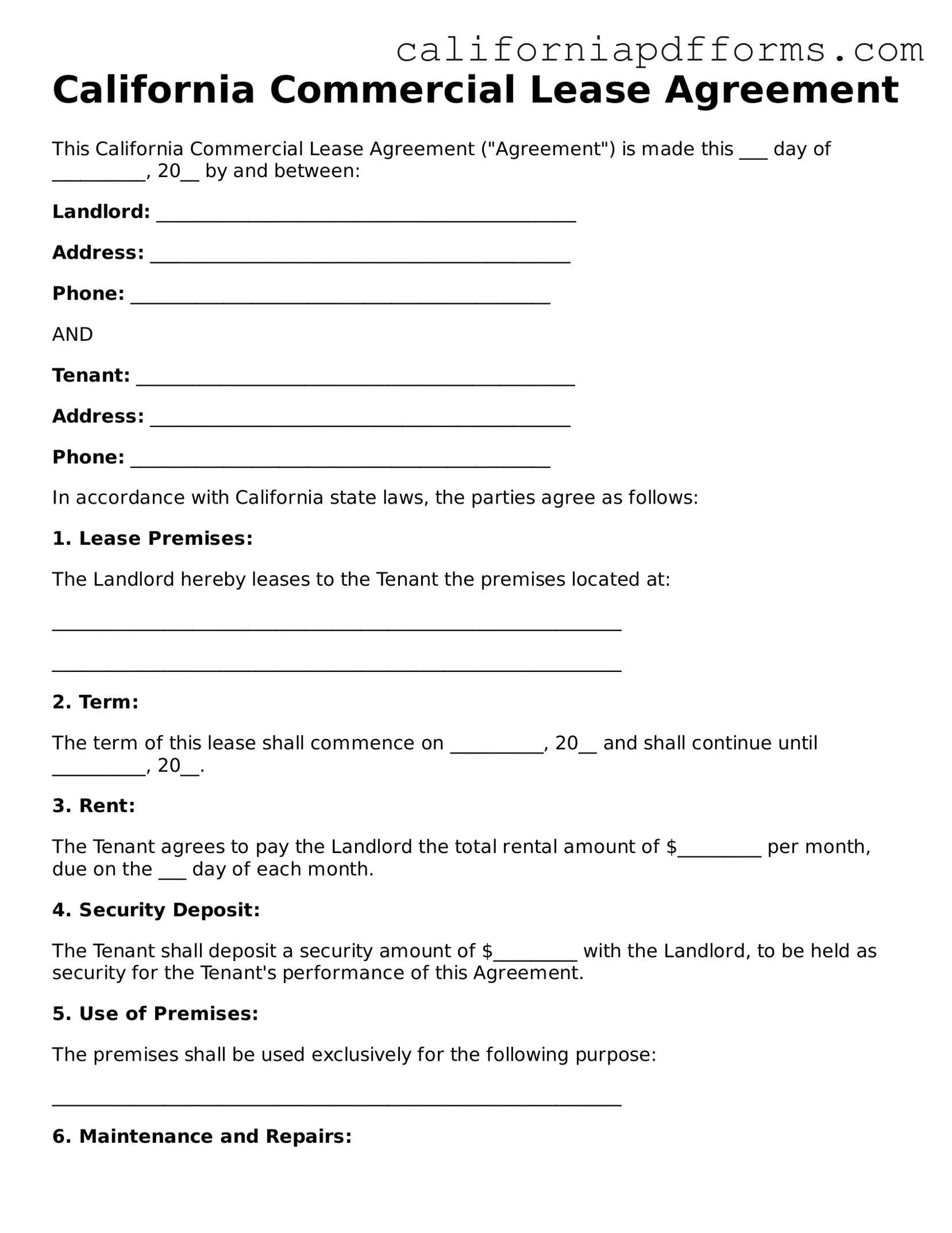What is a California Commercial Lease Agreement?
A California Commercial Lease Agreement is a legal document that outlines the terms and conditions under which a landlord rents commercial property to a tenant. This agreement covers various aspects, including rent, duration of the lease, maintenance responsibilities, and use of the property. It is essential for both parties to understand their rights and obligations.
What key elements should be included in the lease agreement?
When drafting a California Commercial Lease Agreement, ensure it includes the following key elements:
-
Names of the landlord and tenant
-
Description of the leased premises
-
Lease term (start and end dates)
-
Rent amount and payment schedule
-
Security deposit details
-
Maintenance and repair responsibilities
-
Permitted uses of the property
-
Termination conditions
How long is a typical commercial lease term?
The length of a commercial lease can vary widely. Common lease terms range from one to five years, but some leases may extend for longer periods. The duration often depends on the type of business and the specific needs of the tenant and landlord. It's important to negotiate a term that works for both parties.
Can the lease be modified after signing?
Yes, a commercial lease can be modified after it has been signed, but both parties must agree to any changes. Modifications should be documented in writing and signed by both the landlord and tenant to ensure clarity and enforceability. Verbal agreements are not recommended.
What happens if a tenant defaults on the lease?
If a tenant defaults on the lease, the landlord has several options. These may include:
-
Issuing a notice to cure the default, giving the tenant time to resolve the issue.
-
Terminating the lease and taking possession of the property.
-
Seeking damages through legal action.
It's crucial for tenants to understand the terms of default outlined in the lease to avoid potential consequences.
Is it necessary to have a lawyer review the lease?
While it's not legally required to have a lawyer review a commercial lease, it is highly advisable. A legal professional can help identify potential issues, ensure compliance with state laws, and protect your interests. This is especially important for complex leases or if you are unfamiliar with commercial real estate transactions.
What are common types of commercial leases?
There are several common types of commercial leases, including:
-
Gross Lease: The landlord covers all property expenses.
-
Net Lease: The tenant pays a portion of property expenses, such as taxes and maintenance.
-
Percentage Lease: The tenant pays a base rent plus a percentage of sales.
-
Modified Gross Lease: A combination of gross and net leases, where some expenses are shared.
Understanding the type of lease can help tenants make informed decisions based on their business needs.
